A few days ago, I was returning home from a friend of mine here in my city and, to my surprise, a company donated a land and made that area a public garden space.
I was happy with this initiative, but this reminds me of another inspiring story that occurred in Brazil in the 80s, a story already forgotten by many here, but it must be remembered because it was a major government initiatives for the recovery of one the most threatened tropical forests of the world, the Atlantic Forest.
Atlantic Forest for beginners
For those who do not know the Atlantic Forest, despite a few small fragments, mostly discontinuous, has a rich biodiversity and its ecosystem is one of the largest in the world.
The biodiversity of the Atlantic is greater even than the Amazon.
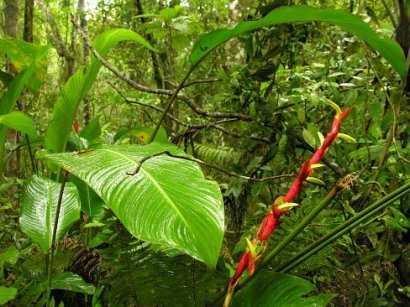
The Atlantic was the second largest rainforest in the occurrence and importance in South America, particularly Brazil.
The area of forest covering all or part seventeen states. The original area was 1,290,692.46 km ², 15% of Brazilian territory. Currently the balance is 95,000 km ², 7.3% of original area due to deforestation and is one of the most threatened tropical forests of the world. Despite a few small fragments, mostly discontinuous, the biodiversity of the ecosystem is one of the largest in the world.
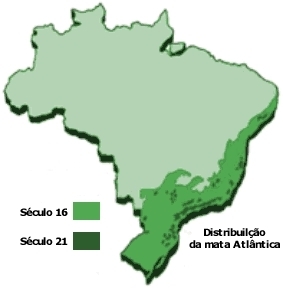
Area occupied by the Atlantiv Forest
In northeastern Brazil was the total extinction, which worsened the conditions of survival of the population, causing hunger, poverty and rural exodus only compared to the poorest regions of the world. In this region, following the defeat of the forest, have plantations of sugar cane; in the south, the cultivation of coffee was the main responsible for the total destruction of native vegetation, leaving a very small area for the preservation of species, these species then were jeopardized by the environmental pollution caused by emission of harmful agents to their survival.
The rate of deforestation is 2.5 times higher than that found in the Amazon in the same period.
The threat of the 80s and the beginning of the reforestation
In 1985, slips in Serra do Mar (a mountain range) in Cubatao, exposed hundreds of gullies, showing the danger to which the population was subject to Cubatão for mud racing. Stockpiles of highly toxic products in the industrial complex and floods endangering the life of the city.
Pressed by public opinion, the Government of the State of São Paulo has created a Special Committee for Rehabilitation of the Serra do Mar. In this Commission, a project preservation and reforestation of the vegetation of that area was create to contain erosion and slip. At the initiative of industries, grasses, mainly Brachiaria were planted.
At the suggestion of the Institute of Botany, the planting of grasses were discontinued and replaced by the reintroduction of native plants of the Serra.
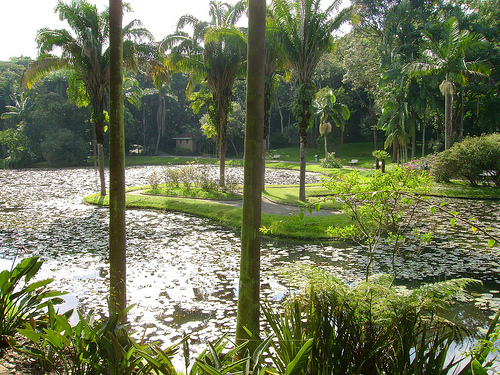
Given the difficulties of obtaining seeds and seedlings, topography and climate of the place, various techniques were used. After two and a half years, the actual outcomes were satisfactory, and the vegetation height and made of the same confusion with previously existing. At the plantation, several research projects are developed.
Colonizing plants and bryophytes and ferns have been identified and their behavior and distribution in different levels of pollution were recorded. One hundred and thirty plants frequent in São Paulo State were selected for places exposed to more pollution intensive and twenty most sensitive species, in the process of extinction, were associated with recommended maintenance in nurseries and later reintroduced in the Serra do Mar under the control of pollution.
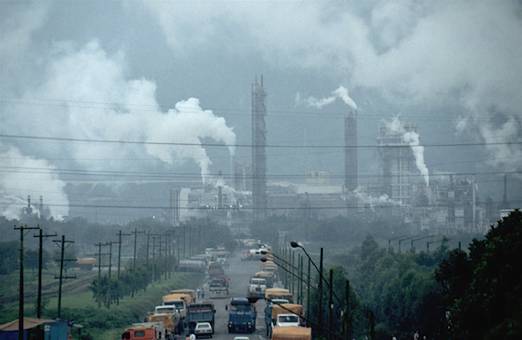
Cubatão a decade ago
The development of plants native tree used (3 m in height after 3 years) is higher than the results obtained with fast-growing exotic plants such as Pinus and Eucalyptus, and therefore the possible recovery of the vegetation without the adulteration of the landscape.
Besides reforestation, started a process of cleaning of Cubatao, an important industrial center, the city that during the 80s was considered the most polluted in the world and that had suffered a major tragedy in Brazilian history (when the explosion of a Petrobras pipeline killed thousands), it was iniciate a project to solve the results of unplanned energy policies.
After this tragedy, the intense government efforts in this city Cubatão made in the 90s a “global example of environmental recovery” (according to UN), and even birds and mammals that appear to have, gone” back “to that region.
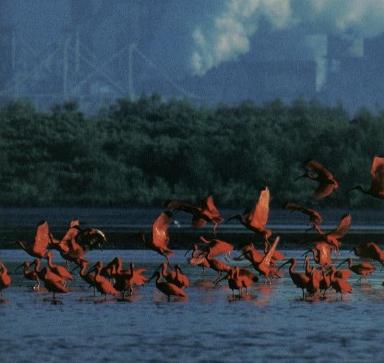
Cubatao today
It is a pity that this initiative not inspired other Brazilian states, which continue to deforesting incessantly. However, we all know that nature always wins. Even if it represents the death of thousands of human beings …




